Control of the senescence-associated secretory phenotype by NF-κB promotes senescence and enhances chemosensitivity
- PMID: 21979375
- PMCID: PMC3205583
- DOI: 10.1101/gad.17276711
Control of the senescence-associated secretory phenotype by NF-κB promotes senescence and enhances chemosensitivity
Abstract
Cellular senescence acts as a potent barrier to tumorigenesis and contributes to the anti-tumor activity of certain chemotherapeutic agents. Senescent cells undergo a stable cell cycle arrest controlled by RB and p53 and, in addition, display a senescence-associated secretory phenotype (SASP) involving the production of factors that reinforce the senescence arrest, alter the microenvironment, and trigger immune surveillance of the senescent cells. Through a proteomics analysis of senescent chromatin, we identified the nuclear factor-κB (NF-κB) subunit p65 as a major transcription factor that accumulates on chromatin of senescent cells. We found that NF-κB acts as a master regulator of the SASP, influencing the expression of more genes than RB and p53 combined. In cultured fibroblasts, NF-κB suppression causes escape from immune recognition by natural killer (NK) cells and cooperates with p53 inactivation to bypass senescence. In a mouse lymphoma model, NF-κB inhibition bypasses treatment-induced senescence, producing drug resistance, early relapse, and reduced survival. Our results demonstrate that NF-κB controls both cell-autonomous and non-cell-autonomous aspects of the senescence program and identify a tumor-suppressive function of NF-κB that contributes to the outcome of cancer therapy.
Figures
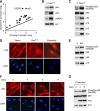
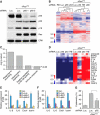
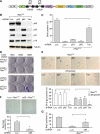
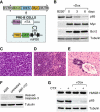
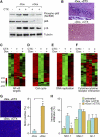
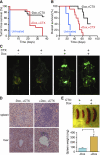
Comment in
-
Senescence. NF-κB shows its beneficial side.Nat Rev Cancer. 2011 Oct 28;11(12):832-3. doi: 10.1038/nrc3168. Nat Rev Cancer. 2011. PMID: 22020169 No abstract available.
Similar articles
-
A previously identified apoptosis inhibitor iASPP confers resistance to chemotherapeutic drugs by suppressing senescence in cancer cells.J Biol Chem. 2020 Mar 20;295(12):4049-4063. doi: 10.1074/jbc.RA119.011411. Epub 2020 Jan 31. J Biol Chem. 2020. PMID: 32005663 Free PMC article.
-
Insight into the role of PIKK family members and NF-кB in DNAdamage-induced senescence and senescence-associated secretory phenotype of colon cancer cells.Cell Death Dis. 2018 Jan 19;9(2):44. doi: 10.1038/s41419-017-0069-5. Cell Death Dis. 2018. PMID: 29352261 Free PMC article.
-
Membrane-Bound CD40L Promotes Senescence and Initiates Senescence-Associated Secretory Phenotype via NF-κB Activation in Lung Adenocarcinoma.Cell Physiol Biochem. 2018;48(4):1793-1803. doi: 10.1159/000492352. Epub 2018 Aug 3. Cell Physiol Biochem. 2018. PMID: 30078020
-
Emerging role of NF-κB signaling in the induction of senescence-associated secretory phenotype (SASP).Cell Signal. 2012 Apr;24(4):835-45. doi: 10.1016/j.cellsig.2011.12.006. Epub 2011 Dec 11. Cell Signal. 2012. PMID: 22182507 Review.
-
Regulation of senescence and the SASP by the transcription factor C/EBPβ.Exp Gerontol. 2019 Dec;128:110752. doi: 10.1016/j.exger.2019.110752. Epub 2019 Oct 22. Exp Gerontol. 2019. PMID: 31648009 Review.
Cited by
-
Development of a high-throughput assay for identifying inhibitors of TBK1 and IKKε.PLoS One. 2012;7(7):e41494. doi: 10.1371/journal.pone.0041494. Epub 2012 Jul 30. PLoS One. 2012. PMID: 22859992 Free PMC article.
-
Cellular and molecular biology of aging endothelial cells.J Mol Cell Cardiol. 2015 Dec;89(Pt B):122-35. doi: 10.1016/j.yjmcc.2015.01.021. Epub 2015 Feb 2. J Mol Cell Cardiol. 2015. PMID: 25655936 Free PMC article. Review.
-
The Role of Aging and Senescence in Immune Checkpoint Inhibitor Response and Toxicity.Int J Mol Sci. 2024 Jun 27;25(13):7013. doi: 10.3390/ijms25137013. Int J Mol Sci. 2024. PMID: 39000121 Free PMC article. Review.
-
Granule exocytosis mediates immune surveillance of senescent cells.Oncogene. 2013 Apr 11;32(15):1971-7. doi: 10.1038/onc.2012.206. Epub 2012 Jul 2. Oncogene. 2013. PMID: 22751116 Free PMC article.
-
Er:YAG Laser Alleviates Inflammaging in Diabetes-Associated Periodontitis via Activation CTBP1-AS2/miR-155/SIRT1 Axis.Int J Mol Sci. 2024 Feb 9;25(4):2116. doi: 10.3390/ijms25042116. Int J Mol Sci. 2024. PMID: 38396793 Free PMC article.
References
-
- Acosta JC, O'Loghlen A, Banito A, Guijarro MV, Augert A, Raguz S, Fumagalli M, Da Costa M, Brown C, Popov N, et al. 2008. Chemokine signaling via the CXCR2 receptor reinforces senescence. Cell 133: 1006–1018 - PubMed
-
- Basseres DS, Baldwin AS 2006. Nuclear factor-κB and inhibitor of κB kinase pathways in oncogenic initiation and progression. Oncogene 25: 6817–6830 - PubMed
-
- Campisi J 2005. Senescent cells, tumor suppression, and organismal aging: good citizens, bad neighbors. Cell 120: 513–522 - PubMed
Publication types
MeSH terms
Substances
Grants and funding
- R43 RR021239/RR/NCRR NIH HHS/United States
- T32 GM008444/GM/NIGMS NIH HHS/United States
- R21 CA143177/CA/NCI NIH HHS/United States
- RR021239/RR/NCRR NIH HHS/United States
- R01 AG016379/AG/NIA NIH HHS/United States
- R41 CA122715/CA/NCI NIH HHS/United States
- CA122715/CA/NCI NIH HHS/United States
- HHMI/Howard Hughes Medical Institute/United States
- R42 CA122715/CA/NCI NIH HHS/United States
- CA143177/CA/NCI NIH HHS/United States
- AG16379/AG/NIA NIH HHS/United States
- R44 RR021239/RR/NCRR NIH HHS/United States
- R56 AG016379/AG/NIA NIH HHS/United States
LinkOut - more resources
Full Text Sources
Research Materials
Miscellaneous
